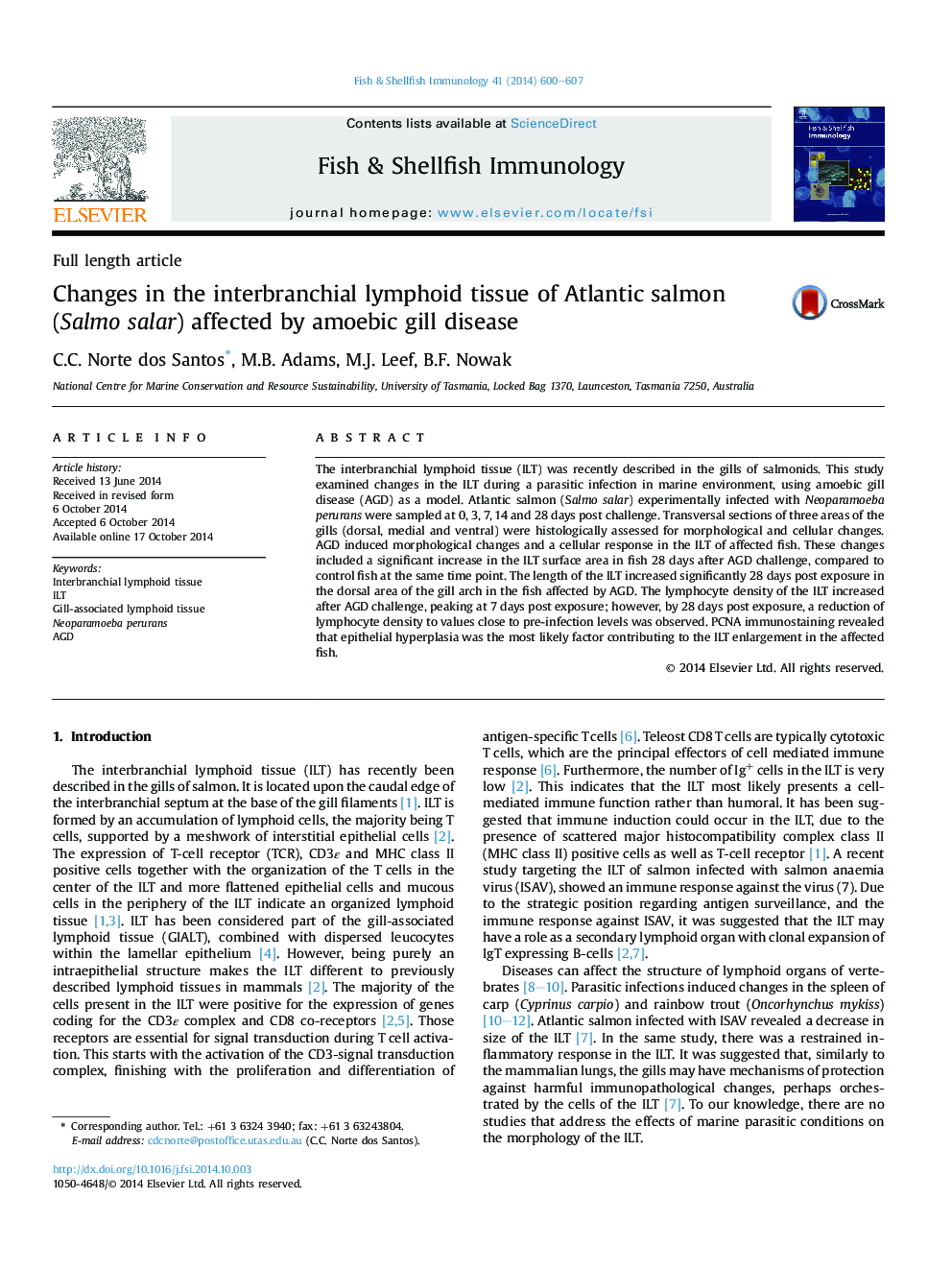| Article ID | Journal | Published Year | Pages | File Type |
|---|---|---|---|---|
| 2430968 | Fish & Shellfish Immunology | 2014 | 8 Pages |
•AGD induced a morphological and cellular response in the ILT, inducing remodeling of the ILT.•The ILT was larger in later stages of infection.•The density of lymphocytes decreased in later stages of infection.•Epithelial hyperplasia was the most likely factor contributing to the ILT enlargement.
The interbranchial lymphoid tissue (ILT) was recently described in the gills of salmonids. This study examined changes in the ILT during a parasitic infection in marine environment, using amoebic gill disease (AGD) as a model. Atlantic salmon (Salmo salar) experimentally infected with Neoparamoeba perurans were sampled at 0, 3, 7, 14 and 28 days post challenge. Transversal sections of three areas of the gills (dorsal, medial and ventral) were histologically assessed for morphological and cellular changes. AGD induced morphological changes and a cellular response in the ILT of affected fish. These changes included a significant increase in the ILT surface area in fish 28 days after AGD challenge, compared to control fish at the same time point. The length of the ILT increased significantly 28 days post exposure in the dorsal area of the gill arch in the fish affected by AGD. The lymphocyte density of the ILT increased after AGD challenge, peaking at 7 days post exposure; however, by 28 days post exposure, a reduction of lymphocyte density to values close to pre-infection levels was observed. PCNA immunostaining revealed that epithelial hyperplasia was the most likely factor contributing to the ILT enlargement in the affected fish.
